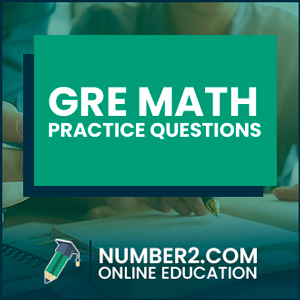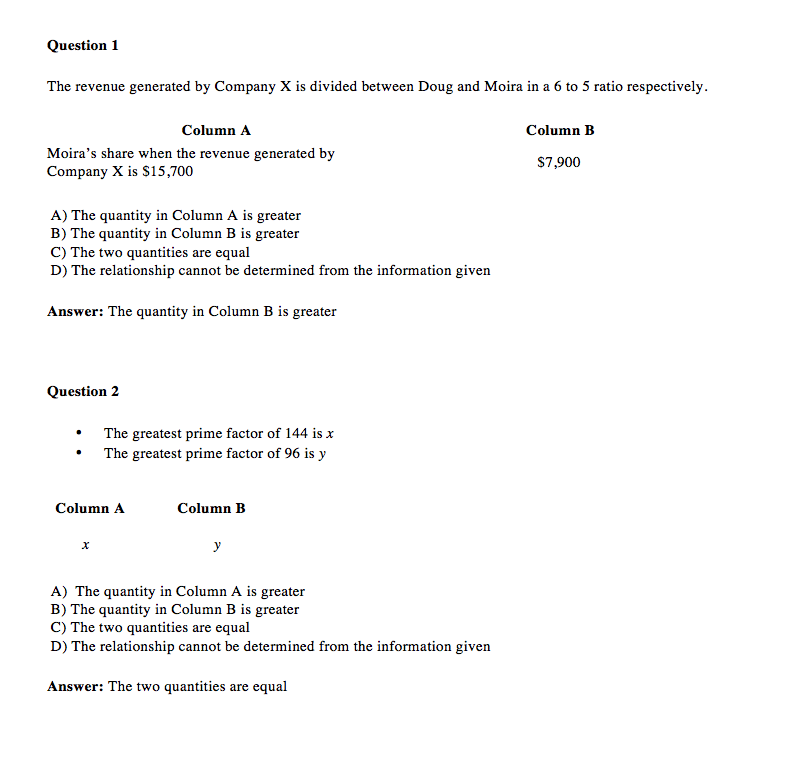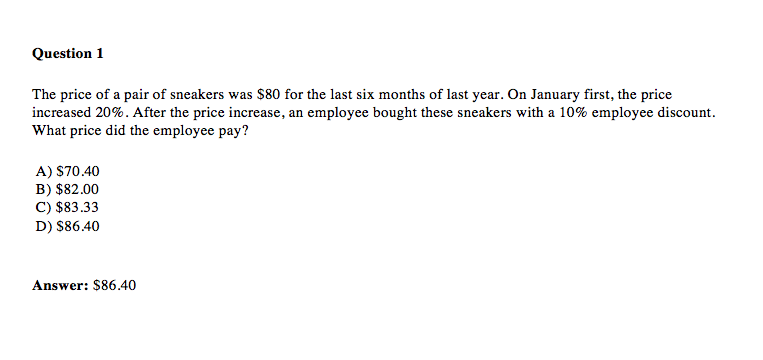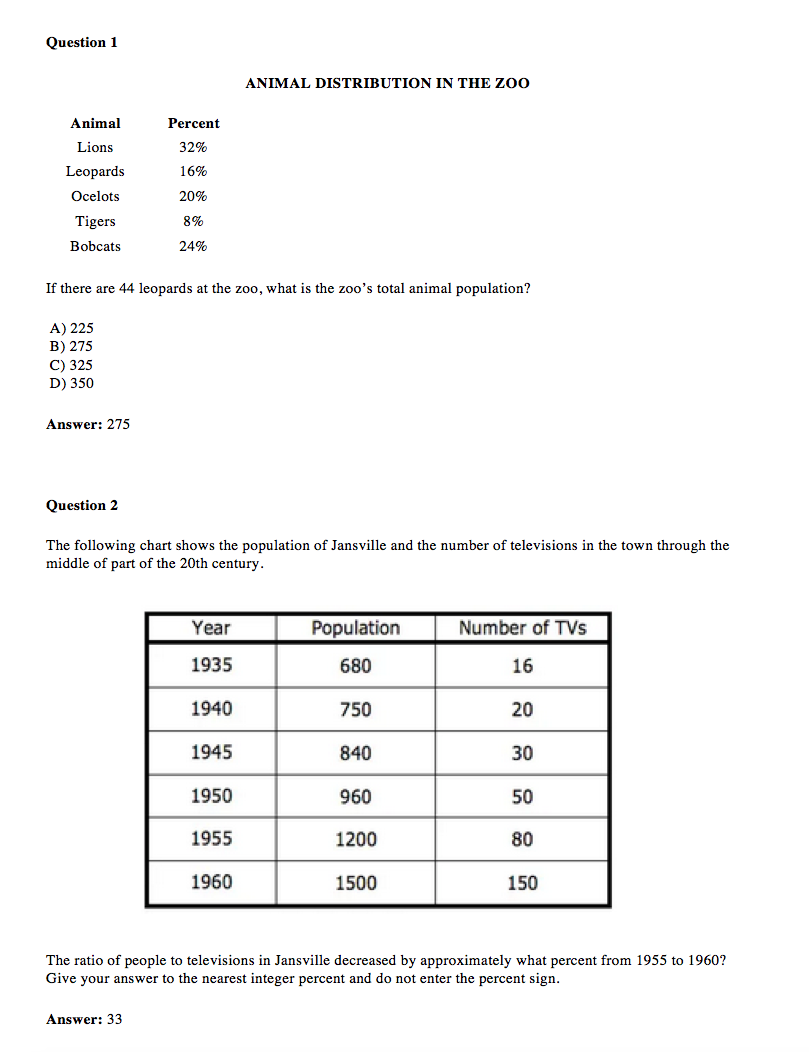 Understanding the GRE Math Test with Practice Questions
Understanding the GRE Math Test with Practice Questions
Even if you are a math major or someone who hasn’t learned math since high school, GRE will test you in several math topics ranging from coordinate systems, symbols to tables and shapes.
The GRE math section is often called the GRE quantitative reasoning section. The best way to tackle the test is to understand what the section is, the topics covered and how it is graded.
Here is a comprehensive review of the GRE math practice questions to help you understand the concepts and tips to help you ace the test.
What is the GRE Math Test?
GRE Math or Quantitative Reasoning section also referred to as “Quant,” is among the three major GRE components, with the other being Analytical Writing and Verbal Reasoning. Thus, candidates face two Math and Verbal sections, but the completion order is random. Notably, the experimental section can be added to the Verbal or Quant section, but it is not graded.
It is vital to remember that the GRE Math section isn’t an advanced math test, and remembering everything learned in high school might not be adequate for you to ace the test. The challenging aspect of the test comes with the need for logical reasoning through each problem.
Technically you will be tested on your ability to handle a range of geometric figures and properties. Most importantly, you won’t be rewarded for the process because GRE is only interested in the correct answer.
What’s on the GRE Math Exam?
What Skills are Tested?
GRE math section is always in word problem format, with the rest of the section being purely in mathematical form. Interestingly in both circumstances, the concepts tested fall in algebra, Geometry, Arithmetic, and data analysis.
Around 50% of the test questions will cover calculus and its applications, and 25% will test abstract algebra, linear algebra, elementary algebra, and number theory. The rest of the questions will deal with other Math areas.
- Calculus: 50%
- Algebra: 25%
- Other Math Topics: 25%
Calculus
Calculus covers material learned in elementary calculus courses that include integral and differential calculus as well as calculus-based application scan relations with differential equations, trigonometry, coordinate geometry, and other math branches.
Algebra
Algebra topics cover basic algebraic expressions and manipulations learned through high school, linear algebra, linear equations systems, matrix algebra, linear transformations, eigenvectors and eigenvalues, characteristic polynomials, and vector spaces.
On the other hand, abstract algebra and number theory topics will cover elementary topics from the theory of rings and modules, elementary group theory topics, number theory, and field theory.
Additional topics
Additional topics cover math formulas, discrete mathematics, including set theory, logic, combinations, algorithms, and graph theory. The other topic covered is the introduction to real analysis, including continuity, elementary topography, sequences, number series and functions, and integrability & differentiability.
You could also encounter geometry, the general topography of R and R, numerical analysis, probability& statistics, and complex variables.
Types of Questions on the GRE Math Test
The GRE math test covers three main types of questions: quantitativge comparison, problem-solving, data interpretation questions.
Each type of question on the GRE practice test evaluates a unique thought pattern and mathematic skill set. Here are some examples.
Quantitative Comparison Questions
These question types will ask the candidate to compare quantities A and B and ascertain their connection. There are seven to eight questions in the quantitative comparison section.
The trick to answering these questions is familiarizing yourself with shortcut methods allowing you to compare instead of calculating which is faster.
Problem Solving Questions
most problem-solving questions are five multiple-choice answer questions where the candidate has to pick one correct answer. Notably, variants include questions asking one to select one or more answer options, and some may ask the student to enter the numeric answers in a box.
In addition, some of the problem-solving questions might be connected with charts, graphs and they are usually around three.
Data Interpretation Questions
In the problem-solving section, there are some questions associated with graphs and charts. The questions will ask the candidate to analyze or interpret provided data, and the questions take numeric entry format and multiple-choice questions.
The trick is knowing how to glean information from the graphs to answer the questions.
GRE Math Practice Questions
Taking practice exam questions is one of the most important study strategies you can implement.
Here are a few GRE math practice questions to help you study every math problem type you’re likely to find on the test.
GRE Math Quantitative Comparison Practice Test

GRE Math Problem Solving Practice Test

GRE Math Data Interpretation Practice Test

GRE Math Exam Format & Structure
The GRE Math section comprises three parts, including problem-solving, data interpretation, and quantitative comparison questions. The full test length is about 100 minutes. You have 35 minutes to answer 20 questions in each part, which will be an assortment of problem-solving, data interpretation, and quantitative comparisons items.
Therefore, you have around 1.5-2 minutes to attempt the questions.
Notably, the question distribution is not even. You will encounter the quantitative comparison section first, followed by problem-solving, and then data interpretation questions will be presented in a set near the end of problem-solving questions.
How is the GRE Math Test Scored & Graded?
All questions in the GRE math section are graded, and correct answered account for the total test score, which will be converted into a scaled score. The scaling ensures that GRE Math section scores from any edition are comparable.
For example, the Quant section scaled score ranged between 130 and 170, which means you cannot score more than 170. Institutions use percentiles of scaled scores to give admissions to students.
What is a Good GRE Math Test Score?
Are all GRE Math Questions Graded?
A good score in the GRE Math section falls between 165 and 170, mainly in the 75th percentile.
The GRE score you need depends on the institution’s requirements you want to join and your application’s overall strength.
When can Students take the GRE Math Test?
The GRE Math section is offered thrice per year in April, September, and October.
Students can take the test in junior high, preferably in early April (in the spring).
Although the other two test dates are in late September and October, the test date usually comes after registration is closed, so a student should sign for both.
Can You use a Calculator on the GRE Math Test?
No, you are not allowed to bring in an outside calculator to your GRE math test. There will be a simple calculator on the GRE computerized test that you can use for basic computations.
You must have a confirmation voucher/ email you receive from ETS after registration on the testing day. Always carry an acceptable valid identification and around three HB sharpened pencils and an eraser.
Mechanical pens and pencils are not allowed. In addition, a calculator, jewelry, accessories, and watches are not permitted.
GRE Math Cost & Fees
The GRE fee is $205, which can be expensive for some people. Interestingly, ETS makes it possible for all candidates by offering a partial waiver for students eligible for the GRE Fee reduction Program.

